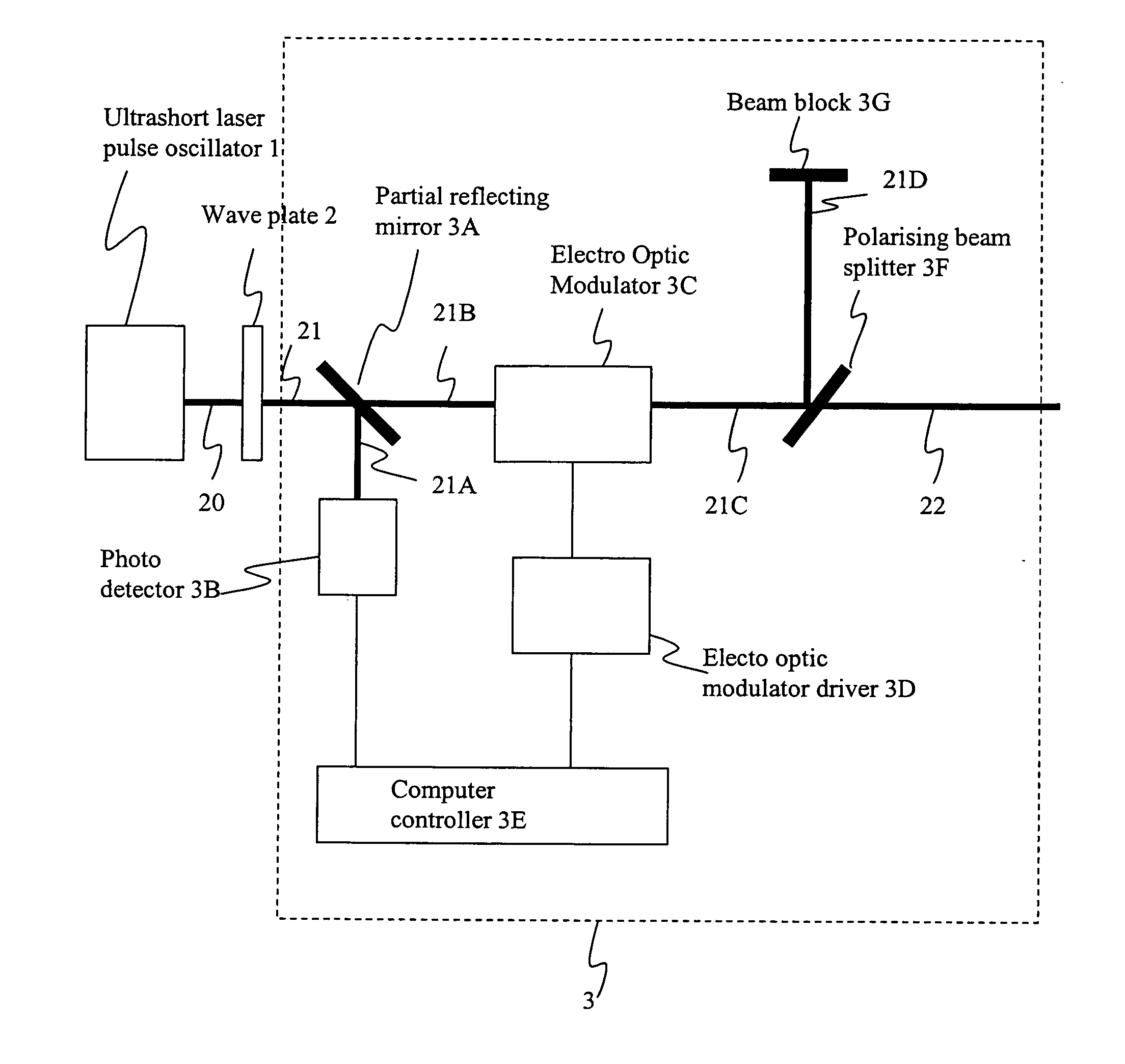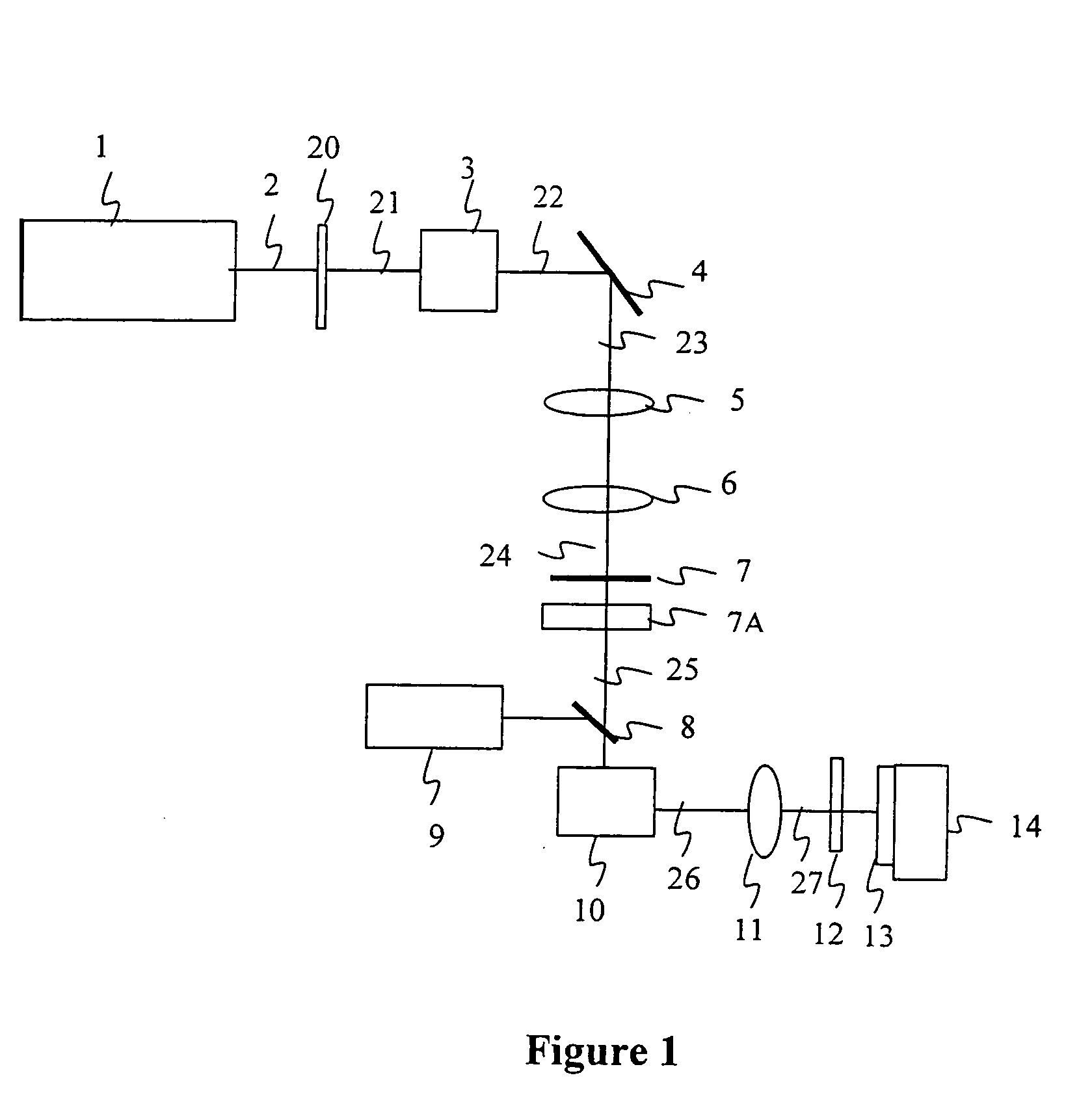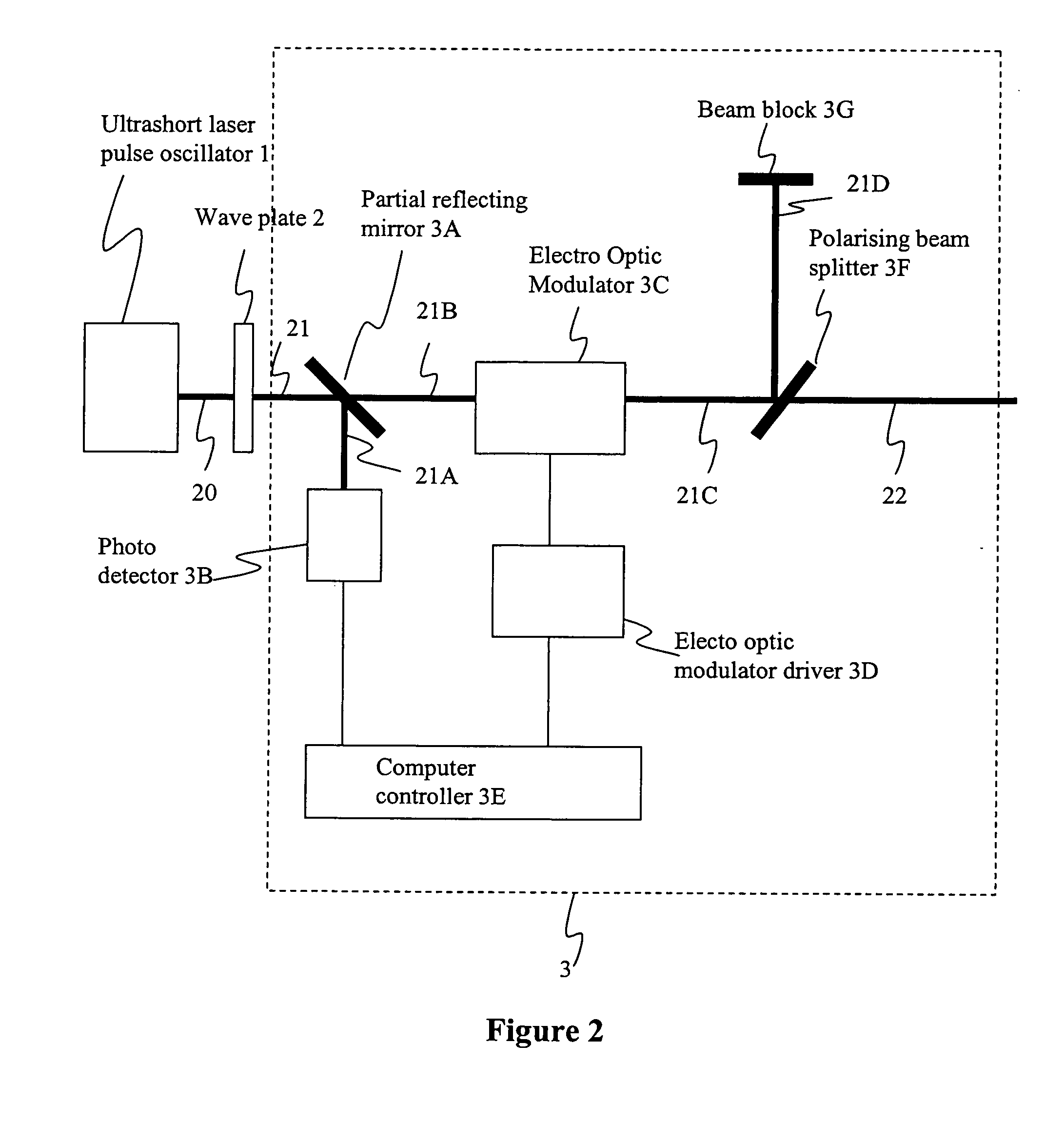Method and apparatus for dicing of thin and ultra thin semiconductor wafer using ultrafast pulse laser
a technology of ultra-thin semiconductor wafers and ultra-thin semiconductor wafers, applied in metal working apparatus, manufacturing tools, welding/soldering/cutting articles, etc., can solve the problems of thin ic packaging dicing, die chipping and breakage, and severe backside chipping, so as to improve the quality improve the accuracy of dicing, and improve the effect of top surface and inner wall quality
- Summary
- Abstract
- Description
- Claims
- Application Information
AI Technical Summary
Benefits of technology
Problems solved by technology
Method used
Image
Examples
Embodiment Construction
[0057] The object of the present invention is to provide an improved method and apparatus for dicing of thin and ultrathin semiconductor wafer and to ameliorate the aforesaid deficiencies of the prior art by using ultrafast pulse generated directly from the laser oscillator. The laser oscillators are mode locked diode pumped solid state laser system, which is stable and compact. The pulse laser beam having a pulse width of ifs to 100 ps of repletion rate from 1 MHz to 400 MHz is controlled by an electro optic modulator or acousto optic modulator. Alternatively, an amplified ultrafast laser source is used for dicing a semiconductor wafer of a thickness above 80 micrometer.
[0058] The modulated pulse is expanded to a required beam diameter by using a combination of positive and negative lens to act as a telescope. Varying the diameter of the laser beam, the focused laser spot size can be varied. The pulsed laser beam is scanned by a two axis galvanometer scanner to scan the pulse lase...
PUM
| Property | Measurement | Unit |
|---|---|---|
| Length | aaaaa | aaaaa |
| Length | aaaaa | aaaaa |
| Length | aaaaa | aaaaa |
Abstract
Description
Claims
Application Information
 Login to View More
Login to View More - R&D
- Intellectual Property
- Life Sciences
- Materials
- Tech Scout
- Unparalleled Data Quality
- Higher Quality Content
- 60% Fewer Hallucinations
Browse by: Latest US Patents, China's latest patents, Technical Efficacy Thesaurus, Application Domain, Technology Topic, Popular Technical Reports.
© 2025 PatSnap. All rights reserved.Legal|Privacy policy|Modern Slavery Act Transparency Statement|Sitemap|About US| Contact US: help@patsnap.com



